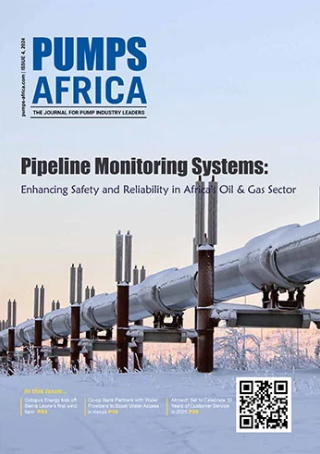Valves are essential components in numerous industries, acting as critical control devices that regulate the flow of liquids, gases, and other materials through various systems. By enabling the precise management of flow rates and pressures, valves play a pivotal role in ensuring the safety, efficiency, and reliability of industrial operations. These mechanical devices are integral to the functionality of systems across a broad spectrum of applications, from water treatment facilities to oil and gas pipelines, chemical processing plants, and beyond.
The basic function of a valve is to control the flow of media by opening, closing, or partially obstructing passageways. This seemingly simple operation can have far-reaching implications for the efficiency and safety of industrial processes. For instance, in the oil and gas industry, valves are crucial for controlling the flow of crude oil and natural gas, preventing leaks, and managing pressure levels to avoid potentially hazardous situations. Similarly, in the water treatment sector, valves help in regulating water flow and pressure, ensuring the consistent delivery of clean water.
Valves also contribute to energy savings and environmental protection by optimizing system performance and reducing waste. Efficient valve operation can minimize unnecessary energy consumption and reduce emissions, aligning with sustainability goals and regulatory compliance. Furthermore, the reliability of valves is paramount in critical industries such as healthcare and pharmaceuticals, where precise flow control is necessary to maintain the integrity of medical and chemical processes.
There are numerous types of valves, each designed to suit specific applications and operational requirements. Common types include gate valves, globe valves, ball valves, butterfly valves, and check valves, among others. Each type has unique features and advantages that make it suitable for particular uses within various industries. The following sections will delve deeper into these different valve types, exploring their specific functions and applications across diverse industrial landscapes.
Common Types of Valves and Their Mechanisms
Valves play a critical role in various industrial applications, regulating the flow of fluids and gases. Among the most common types of valves are gate valves, ball valves, butterfly valves, check valves, and globe valves, each with unique mechanisms and design characteristics that suit specific needs.
Gate Valves: Gate valves are widely used for on-off control. Their mechanism involves a flat or wedge-shaped gate that moves perpendicularly to the flow direction. When the gate is lifted, it allows fluid to pass through unobstructed; when lowered, it seals the passage. Gate valves are particularly suitable for applications requiring a full, unobstructed flow, such as in pipelines carrying water, oil, or gas.
Ball Valves: Ball valves feature a spherical disc (the ball) with a hole in the middle. When the valve is in the open position, the hole aligns with the flow direction, allowing fluid to pass through. Rotating the ball by 90 degrees closes the valve, blocking the flow. Ball valves offer reliable sealing and are used in applications needing quick shut-off, such as in chemical, petrochemical, and water treatment industries.
Butterfly Valves: Butterfly valves use a rotating disc to regulate flow. The disc remains in the flow path but rotates to allow or restrict fluid movement. These valves are lightweight, require less space, and are often used in large diameter pipes. They’re ideal for applications requiring precise flow control, such as in HVAC systems, food processing, and water distribution.
Check Valves: Check valves, or non-return valves, prevent backflow in a system. They operate automatically, allowing flow in one direction and closing if the flow reverses. The common designs include swing check and lift check valves. Their primary applications are in water and wastewater management, mining, and power generation industries, where maintaining directional flow is crucial.
Globe Valves: Globe valves are designed for throttling applications. They consist of a movable disk-type element and a stationary ring seat in a spherical body. The fluid flow changes direction within the valve, which provides better control over flow rates. Globe valves are commonly used in applications requiring frequent adjustment, such as in steam, oil, and gas pipelines.
Understanding these valve types and their mechanisms can significantly enhance operational efficiency and safety across various industries. Each valve type offers distinct advantages, making it essential to select the appropriate valve for specific applications.
Industry-Specific Applications of Valves
Valves play a critical role across a multitude of industries, each with unique requirements and operational challenges. In the oil and gas sector, for instance, valves must withstand high pressures and temperatures, as well as corrosive environments. Gate valves and ball valves are commonly utilized due to their ability to provide a tight seal and handle the rigors of oil and gas extraction and transportation. In contrast, the water and wastewater treatment industry often employs butterfly valves and check valves. These valves offer reliable flow control and are vital for managing large volumes of fluid through extensive pipeline networks, ensuring efficient and safe water distribution and treatment.
Chemical processing plants demand valves that can handle aggressive chemicals and varying temperatures. Diaphragm valves and plug valves are frequently chosen for these applications due to their robust materials and design, which prevent leakage and ensure operational safety. Power generation facilities, especially those relying on nuclear and thermal energy, necessitate valves that can operate under extreme conditions. Globe valves and safety relief valves are prevalent in these settings, providing precise flow regulation and critical pressure relief to maintain system integrity.
The food and beverage industry, with its stringent hygiene standards, leans heavily on sanitary valves such as pinch valves and hygienic butterfly valves. These valves are designed to prevent contamination and are easy to clean, complying with the industry’s rigorous health and safety regulations. For example, in beverage production, pinch valves are often used due to their ability to control the flow of sensitive liquids without causing any degradation in quality.
Each industry’s specific demands dictate the type of valves employed, ensuring that operational efficiency, safety, and regulatory compliance are maintained. By understanding these industry-specific requirements, companies can select the most suitable valve types, optimizing their processes and achieving reliable performance.
Innovations and Future Trends in Valve Technology
Recent years have seen significant advancements in valve technology, driven by the need for improved efficiency, reliability, and automation across various industries. One of the most groundbreaking developments is the emergence of smart valves. These valves integrate sensors and Internet of Things (IoT) technology, enabling real-time monitoring and control. By collecting and analyzing data, smart valves can predict maintenance needs, optimize performance, and reduce downtime, thereby offering substantial economic and operational benefits.
Advancements in materials science have also played a crucial role in the evolution of valve technology. Innovations in materials such as advanced composites, ceramics, and high-performance alloys have led to the creation of valves that are more durable, corrosion-resistant, and capable of withstanding extreme temperatures and pressures. These materials not only extend the lifespan of valves but also improve their efficiency, making them suitable for a wide range of demanding applications in industries such as oil and gas, chemical processing, and power generation.
Automation and digitalization are further transforming valve operations. The integration of automated control systems allows for precise and remote operation of valves, minimizing human intervention and the potential for error. Digital twins—virtual replicas of physical valves—are being used for simulation, testing, and monitoring, providing valuable insights into the performance and health of valve systems. This digital transformation enhances the ability to manage and optimize complex valve networks, particularly in large-scale industrial settings.
Looking ahead, the future of valve technology promises continued innovation and development. Trends such as the increasing adoption of artificial intelligence (AI) and machine learning (ML) are likely to further enhance the capabilities of smart valves, enabling even more sophisticated predictive maintenance and performance optimization. Additionally, the growing emphasis on sustainability and energy efficiency will drive the development of eco-friendly valve solutions that reduce environmental impact.
In conclusion, the landscape of valve technology is rapidly evolving, with smart valves, advanced materials, and digitalization leading the way. These innovations are set to revolutionize valve operations, offering greater efficiency, reliability, and sustainability across various industries. As technology continues to advance, we can expect even more transformative developments, shaping the future of valve technology for years to come.







